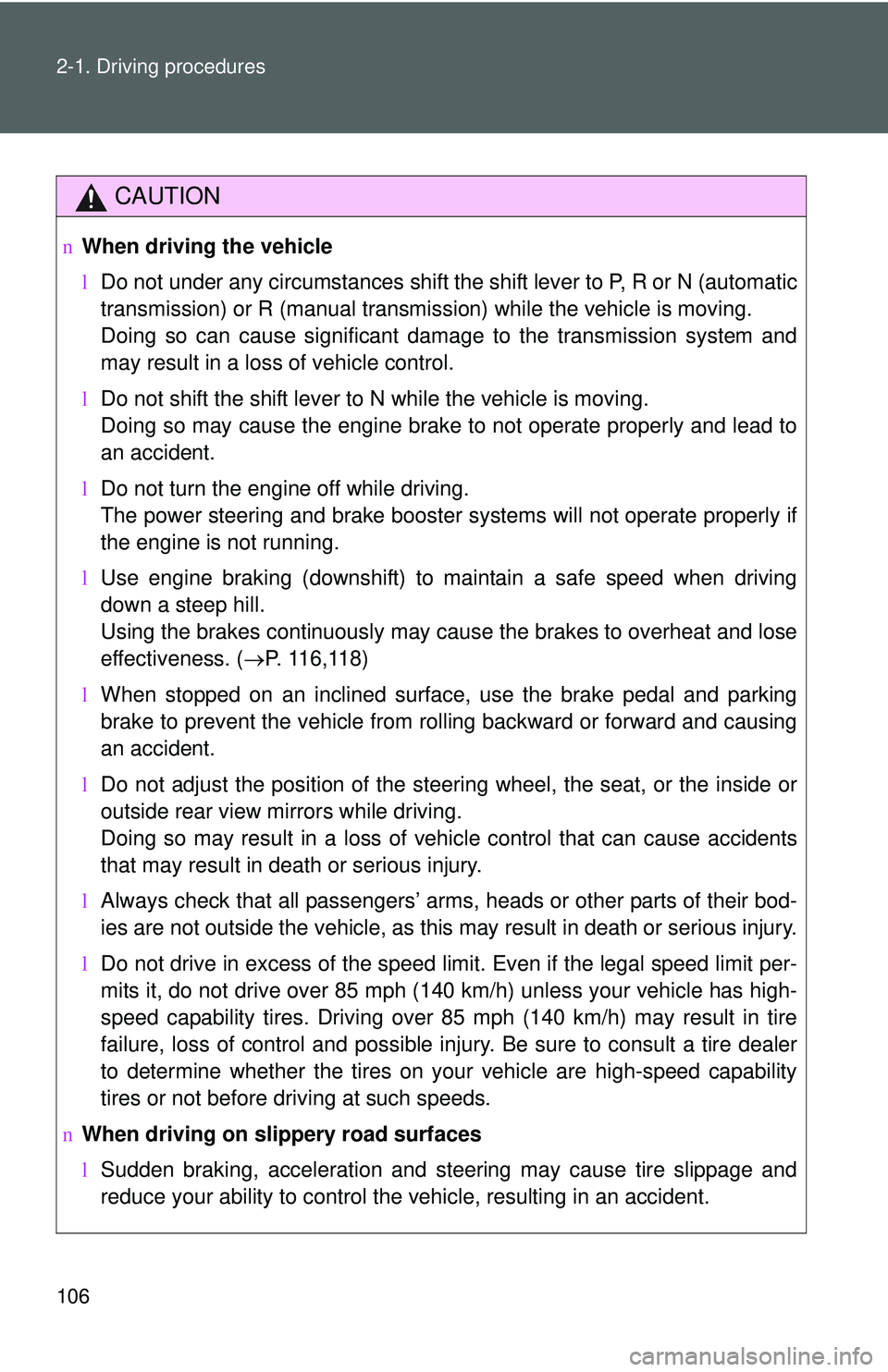Page 8 of 406
6
Headlights (low and high beam)
and daytime running lights
P. 132, 133
Pictorial indexExterior
Front fog lights∗ P. 134
Hood P. 235
Windshield wipers P. 135
Outside rear view mirrors P. 54
Front side marker lights P. 132
Front turn signal/
parking lights
P. 119, 132
Page 11 of 406
9
Anti-glare inside
rear view mirror
P. 52
Interior light P. 203
Vanity mirrors P. 211
Personal lights P. 203
Sun visors P. 210
SRS curtain shield airbags∗ P. 71
∗: If equipped
Page 16 of 406
14
Pictorial indexInstrument panel
Rear window defogger switch∗/
Rear window defogger and outside rear
view mirror defogger switch
∗ P. 174
Air conditioning system P. 166
AUX port∗ P. 200
Page 18 of 406
16
Pictorial indexInstrument panel
Instrument panel light
control dial
P. 127
Cup holders P. 206Outside rear view mirror
switches
∗ P. 54
Page 23 of 406
\f
OVERVIEW
Instrument panel light control
Power outside rearview mirror controls*
Headlight, turn signal and front fog light* controls
Cruise control*
Ignition switch
Wiper and washer controls
Emergency flasher button
Front passenger seat belt reminder light
Clock adjust button
Odometer/Trip meter switch and trip meter reset button“A
A
A
A
R
Ti
H
*
414838M2.qxd:414838\:M2 8/4/10 6:08 AM\: Page 2
Page 66 of 406
52
1-3. Adjustable components (seats, mirrors, steering wheel)
Anti-glare inside rear view mirror
Adjusting the height of rear view mirrorAdjust the height of the rear view
mirror by moving it up and down.
Glare from the headlights of vehicles behind can be reduced by
using the following functions.
Normal position
Anti-glare position
Page 68 of 406
54
1-3. Adjustable components (seats, mirrors, steering wheel)
Outside rear view mirrors
Mirror angle can be adjusted using the switch or lever.
Power-adjustable type
Select a mirror to adjust.
(L: left or R: right)
Adjust the mirror up, down,
in or out using the switch.
Manually adjustable type Adjust the mirror up, down, in
or out using the lever.
Page 119 of 406

106 2-1. Driving procedures
CAUTION
nWhen driving the vehicle
lDo not under any circumstances shift the shift lever to P, R or N (automatic
transmission) or R (manual transmission) while the vehicle is moving.
Doing so can cause significant damage to the transmission system and
may result in a loss of vehicle control.
l Do not shift the shift lever to N while the vehicle is moving.
Doing so may cause the engine brake to not operate properly and lead to
an accident.
l Do not turn the engine off while driving.
The power steering and brake booster systems will not operate properly if
the engine is not running.
l Use engine braking (downshift) to maintain a safe speed when driving
down a steep hill.
Using the brakes continuously may cause the brakes to overheat and lose
effectiveness. ( →P. 116,118)
l When stopped on an inclined surface, use the brake pedal and parking
brake to prevent the vehicle from rolling backward or forward and causing
an accident.
l Do not adjust the position of the steering wheel, the seat, or the inside or
outside rear view mirrors while driving.
Doing so may result in a loss of vehicle control that can cause accidents
that may result in death or serious injury.
l Always check that all passengers’ arms, heads or other parts of their bod-
ies are not outside the vehicle, as this may result in death or serious injury.
l Do not drive in excess of the speed limit. Even if the legal speed limit per-
mits it, do not drive over 85 mph (140 km/h) unless your vehicle has high-
speed capability tires. Driving over 85 mph (140 km/h) may result in tire
failure, loss of control and possible injury. Be sure to consult a tire dealer
to determine whether the tires on your vehicle are high-speed capability
tires or not before driving at such speeds.
n When driving on slippery road surfaces
lSudden braking, acceleration and steering may cause tire slippage and
reduce your ability to control the vehicle, resulting in an accident.